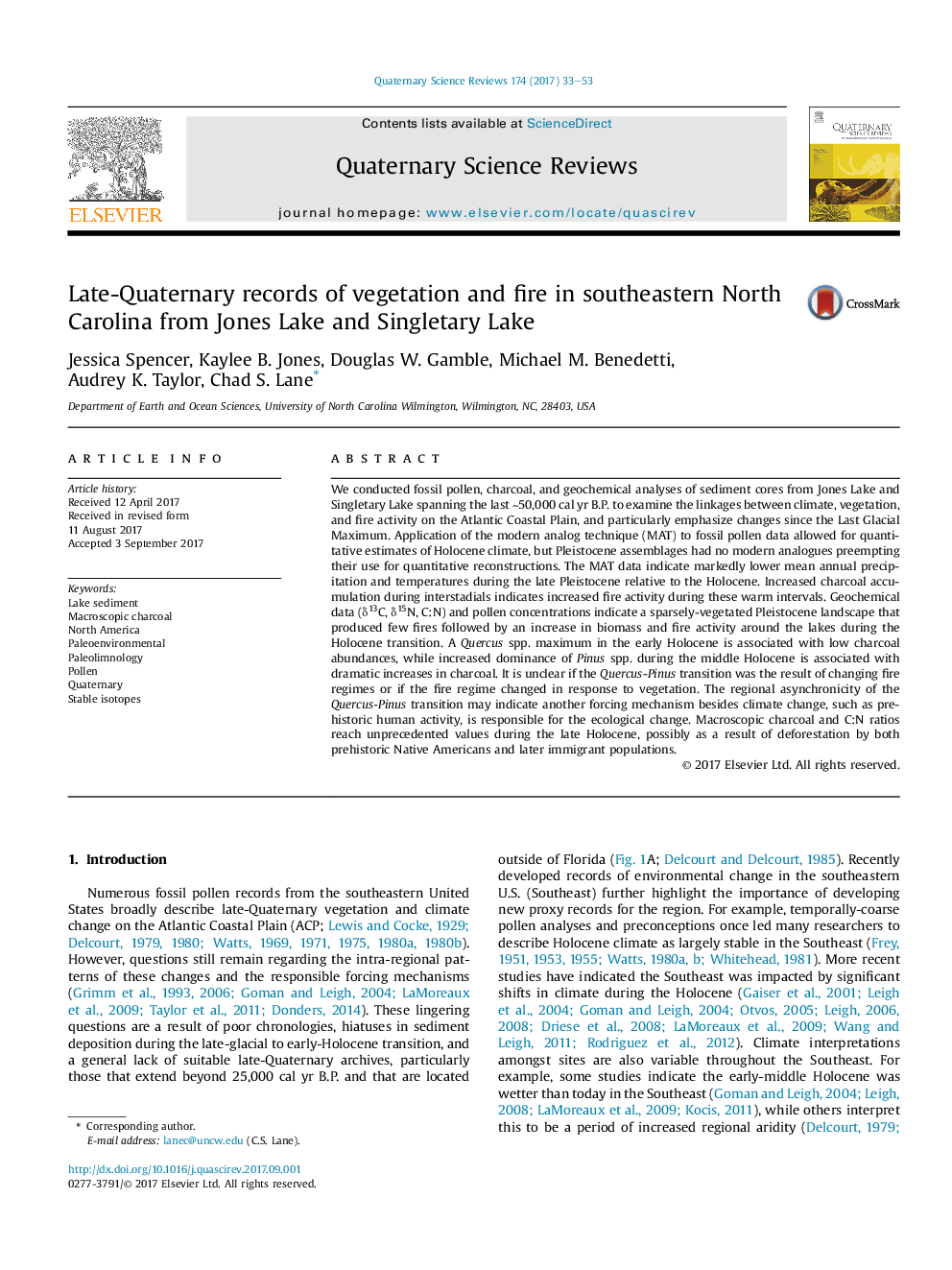| کد مقاله | کد نشریه | سال انتشار | مقاله انگلیسی | نسخه تمام متن |
|---|---|---|---|---|
| 5786536 | 1640761 | 2017 | 21 صفحه PDF | دانلود رایگان |
عنوان انگلیسی مقاله ISI
Late-Quaternary records of vegetation and fire in southeastern North Carolina from Jones Lake and Singletary Lake
ترجمه فارسی عنوان
سوابق کواترنر از پوشش گیاهی و آتش سوزی در جنوب شرقی کارولینای شمالی از دریاچه جونز و دریاچه سینگلتری
دانلود مقاله + سفارش ترجمه
دانلود مقاله ISI انگلیسی
رایگان برای ایرانیان
کلمات کلیدی
موضوعات مرتبط
مهندسی و علوم پایه
علوم زمین و سیارات
زمین شناسی
چکیده انگلیسی
We conducted fossil pollen, charcoal, and geochemical analyses of sediment cores from Jones Lake and Singletary Lake spanning the last â¼50,000 cal yr B.P. to examine the linkages between climate, vegetation, and fire activity on the Atlantic Coastal Plain, and particularly emphasize changes since the Last Glacial Maximum. Application of the modern analog technique (MAT) to fossil pollen data allowed for quantitative estimates of Holocene climate, but Pleistocene assemblages had no modern analogues preempting their use for quantitative reconstructions. The MAT data indicate markedly lower mean annual precipitation and temperatures during the late Pleistocene relative to the Holocene. Increased charcoal accumulation during interstadials indicates increased fire activity during these warm intervals. Geochemical data (δ13C, δ15N, C:N) and pollen concentrations indicate a sparsely-vegetated Pleistocene landscape that produced few fires followed by an increase in biomass and fire activity around the lakes during the Holocene transition. A Quercus spp. maximum in the early Holocene is associated with low charcoal abundances, while increased dominance of Pinus spp. during the middle Holocene is associated with dramatic increases in charcoal. It is unclear if the Quercus-Pinus transition was the result of changing fire regimes or if the fire regime changed in response to vegetation. The regional asynchronicity of the Quercus-Pinus transition may indicate another forcing mechanism besides climate change, such as prehistoric human activity, is responsible for the ecological change. Macroscopic charcoal and C:N ratios reach unprecedented values during the late Holocene, possibly as a result of deforestation by both prehistoric Native Americans and later immigrant populations.
ناشر
Database: Elsevier - ScienceDirect (ساینس دایرکت)
Journal: Quaternary Science Reviews - Volume 174, 15 October 2017, Pages 33-53
Journal: Quaternary Science Reviews - Volume 174, 15 October 2017, Pages 33-53
نویسندگان
Jessica Spencer, Kaylee B. Jones, Douglas W. Gamble, Michael M. Benedetti, Audrey K. Taylor, Chad S. Lane,
